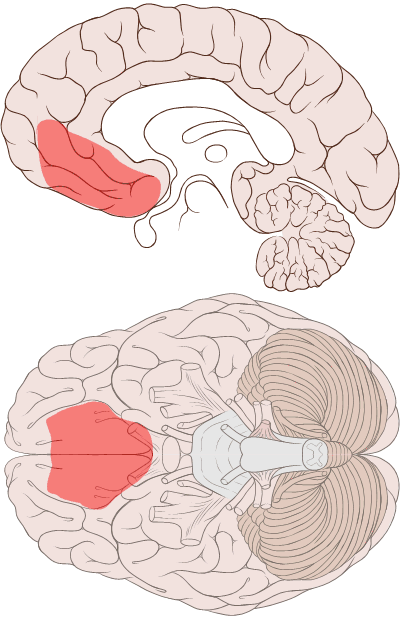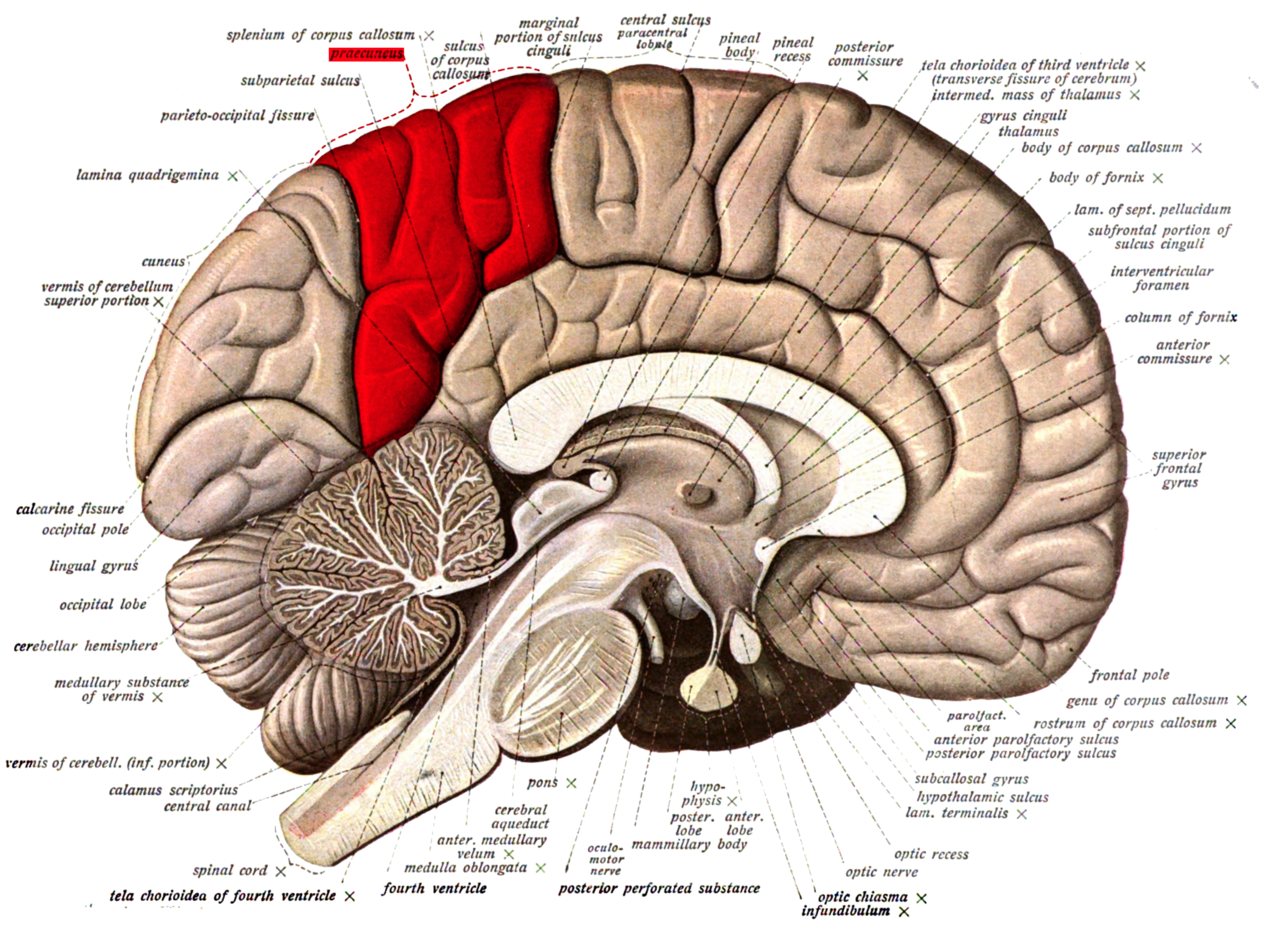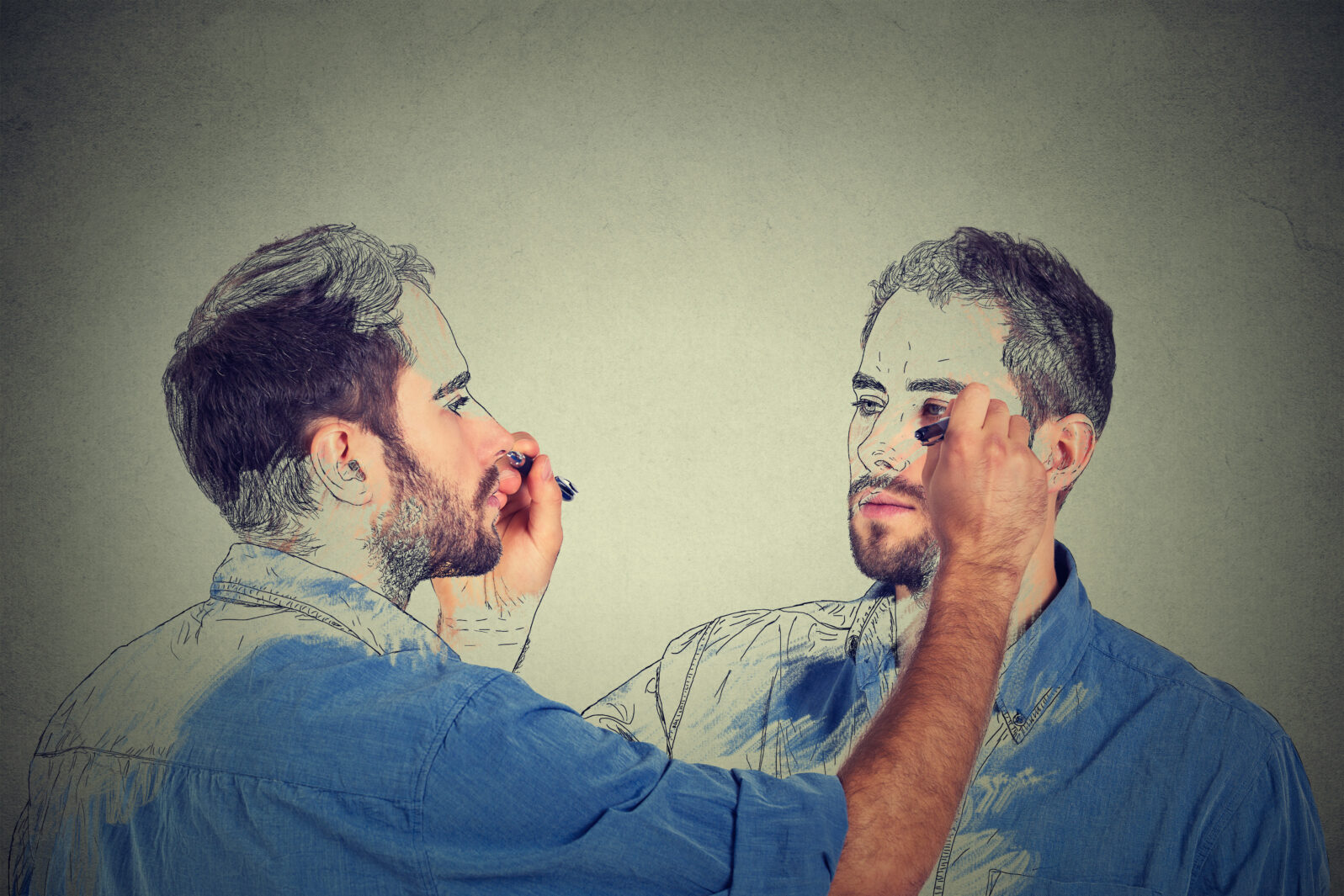Our Essential “I”ness … the Search for Its Address in the Brain
Does “I” — the first person singular — have or need a fixed address in the brain?Neuroscience seems caught between a quest for the exact spot where self-awareness is generated and theorizing that self-awareness is really an illusion.
A search for the spot in the brain that corresponds to “I” — as in Descartes’ famous formulation, “I think, therefore I am” begins with an assumption: That there is any such address in the brain. How is the search coming?
Historically, we have located our sense of self in our hearts or heads. Both locations make sense, in different ways. Our hearts pound when we have strong feelings. As for our heads, it’s more complicated…
When, in as-yet unpublished work, Christina Starmans and her colleagues showed people from the US and India pictures of flies circling around a person, and asked which flies they thought were closest, the results were striking: regardless of cultural background, most people pointed to flies near a person’s eyes. “This suggests there is a universal sense of the self being located in the head, near the eyes,” says Starmans, a psychologist at the University of Toronto in Canada. – Alison George, “Think your sense of self is located in your brain? Think again,” New Scientist, 9 December 2020 See, for example, Windows to the soul
Four of our five senses are located in our heads, with two of them, hearing and smell, sitting quite close to our eyes. The constant feedback about the world provided by that region may be the main reason for our informal sense that our selves are somehow located there.

Patrick J. Lynch, medical illustrator
(CC BY 3.0)
The brain? Well, we don’t usually really notice it much; it’s insensitive to pain. Even when we think something is happening in our brain — a headache, for example — that’s because it is sometimes a poor locator of the affected part.
Some neuroscientists, however, are sure that there must be a single spot in the brain that corresponds to a sense of self. That is, you only have an intact sense of self at all because that spot is active.
For example, neuroscientist Robert Martone points to the ventral medial prefrontal cortex (vmPFC):
A study published in 2021 in the journal Social Cognitive and Affective Neuroscience (SCAN) explores how one particular brain region helps to knit together memories of the present and future self. When people sustain an injury to this area, it leads to an impaired sense of identity. The region—called the ventral medial prefrontal cortex (vmPFC)—may produce a fundamental model of oneself and place it in mental time. When the region does so, this study suggests, it may be the source of our sense of self. – Robert Martone, “How Our Brain Preserves Our Sense of Self, Scientific American, December 21, 2021.
But another current address for the self is the anterior precuneus which, when stimulated in epilepsy patients, was found to cause a sense of detachment from themselves:

Zapping the anterior precuneus caused all eight individuals to report alterations in their subjective experiences similar to what the person with seizures stemming from that region reported. These changes included a feeling of floating, dizziness, a lack of focus and a sense of detachment from themselves. Some participants remarked that the detachment was reminiscent of what they’d felt while on psychedelics. “We discovered that by stimulating this particular region, we can cause distortions in our sense of physical being,” Parvizi says. – Diana Kwon, “How the Brain Creates Your Physical Sense of Self,” Scientific American, July 12, 2023. The paper is open access.
Then there are those who dismiss the idea on the grounds that “Self-awareness isn’t the pinnacle of consciousness – it’s just an accidental byproduct of evolution, and a figment of our minds”:
Most researchers agree that the brain operates at least partly by generating simulations. However, many disagree that consciousness is a functional piece of the modelling machinery. Instead, a widely held view sees it as the unintended by-product of information rushing through the closed loop of connections that is the brain. Consciousness can’t help existing despite serving no particular purpose, just like the noise emitted by a running engine, which has no bearing on the workings of the engine itself. By this way of thinking, self-awareness isn’t even a simulation; it is just a hall of mirrors. – Sofia Deleniv, “The ‘me’ illusion: How your brain conjures up your sense of self,” New Scientist 5 September 2018
Curiously, the same profession that can entertain the idea that consciousness serves “no particular purpose” would hardly be likely to tolerate the idea that it is an immaterial reality associated with no particular spot in the brain. So the search for the last known address of Mr. or Ms. Self continues…
Self-awareness as diffused through the brain?
And every so often, research throws up a puzzling reality. For example, there was “Patient R,” a 57-year-old, college-educated man with extensive brain damage in the areas of the brain assumed to be “integral to self-awareness.” Researchers at the University of Iowa found that he passed all the standard tests of self-awareness:
Self-awareness is defined as being aware of oneself, including one’s traits, feelings, and behaviors. Neuroscientists have believed that three brain regions are critical for self-awareness: the insular cortex, the anterior cingulate cortex, and the medial prefrontal cortex.
However, a research team led by the University of Iowa has challenged this theory by showing that self-awareness is more a product of a diffuse patchwork of pathways in the brain — including other regions — rather than confined to specific areas…
“What this research clearly shows is that self-awareness corresponds to a brain process that cannot be localized to a single region of the brain,” says David Rudrauf, co-corresponding author of the paper, published online Aug. 22 in the journal PLoS One. “In all likelihood, self-awareness emerges from much more distributed interactions among networks of brain regions.”
– John Riehl, “The roots of human self-awareness,” University of Iowa News, August 22, 2012. The paper is open access.
Rudrauf and the other authors, not wanting to be caught without a theory, cite the brainstem, the thalamus, and the posteromedial cortices as playing roles in self-awareness.
As for Patient R., he says of himself, “I am just a normal person with a bad memory.”
We can leave it at that. Or, we can search the whole street map of the brain with ever greater diligence. That self-awareness has got to be in there somewhere.
You may also wish to read: The Mind: A psychiatrist and a neuroscientist walk into a… Psychiatrist Iain McGilchrist, conversing with Christian neuroscientist Sharon Dirckx about materialism’s deficits, shows considerable sympathy for panpsychism. Dispensing with absurd current materialist views of mind, the discussion takes very interesting turns — grounded firmly in clear thinking and neuroscience.
